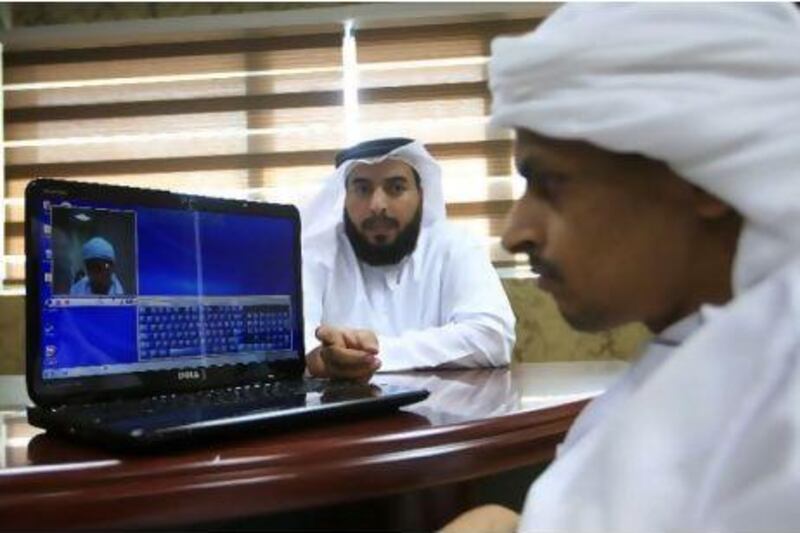Dubai // An Emirati man has designed a computer mouse that uses facial recognition technology to allow disabled people to use computers.
The iMouse software automatically detects and tracks eye, head and nose movements to control the mouse cursor.
"Through our software, we can help people with special needs to be integrated into society," said Hashim Abdullah Al Musaabi, the founder of SmartSoft company.
According to Mr Al Musaabi, the iMouse is the first software capable of detecting an eye wink to stimulate a right and left mouse click.
The software, which is registered with the Abu Dhabi Department of Economic Development, aims to enable those with special needs to join the workforce.
For example, the software can help the disabled to obtain their International Computer Driving Licence (ICDL), the global standard for computer skills.
"They can then be employed in governmental and non-governmental positions," said Mr Al Musaabi. He said he had visited people with special needs in their homes, at hospitals, and even in neighbouring Gulf countries to conduct research. Any computer with a webcam and a Windows operating system can use the software, but Mr Al Musaabi warns it may not be suited to all individuals.
"We have done some experiments and the software does not suit all people with special needs. For example, not all were able to wink twice, to resemble the mouse double-click," he said.
Hence, a recent update has been added to the software to make it helpful to a wider audience.
"We've added a new unique feature where a person can move the mouse cursor and give orders with voice commands. The person can say 'up' to make the mouse go up," Mr Al Musaabi explained.
The iMouse can be moved through voice commands in any language the user prefers.
Mohammed Al Tamimi, 35, a quadriplegic who has been using the software for two months, said the software could help pave the way to employment.
"It will help at a larger scale," said Mr Al Tamimi, who aims to complete Grade 11 next year. "Not everyone with special needs has a source of income and the person needs to make his own way with his best ability," he said. "I really hope this programme gets installed at the special needs centre."
Mr Al Tamimi hopes to finish his education and get a scholarship to study abroad, but finding part-time jobs has been difficult.
"Sometimes they say, 'We can't accept those with special needs'. But we live in a developed country, nothing is impossible," he said.
Another grateful user of the iMouse is 15-year-old Mohammed Khalfan, who has cerebral palsy. His mother says the software has had a positive effect since he started using it one month ago.
"This programme has developed his reading skills, although it does take some physical effort as he can only use his eyes," said Umm Mohammed Khalfan, the mother of the Grade 6 pupil from Sharjah City for Humanitarian Services.
"The most important thing for me is that he learns how to use a computer," she said. "Inshallah, it will benefit his future."
In May, the iMouse software featured on a televised inventors' contest on Sharjah TV, Tomohaat Shabab. It won first place. It has also received interest from international companies and local companies who specialise in disabilities.
Although the software is not available on the market yet, people can order a copy directly from the company.
Mr Al Musaabi said he had approached the Khalifa Fund for backing. "We want it to be produced in the local market and get backed up by the UAE Government," he said. "This programme is distinguished and we want it to hold a logo 'made in the UAE'."






